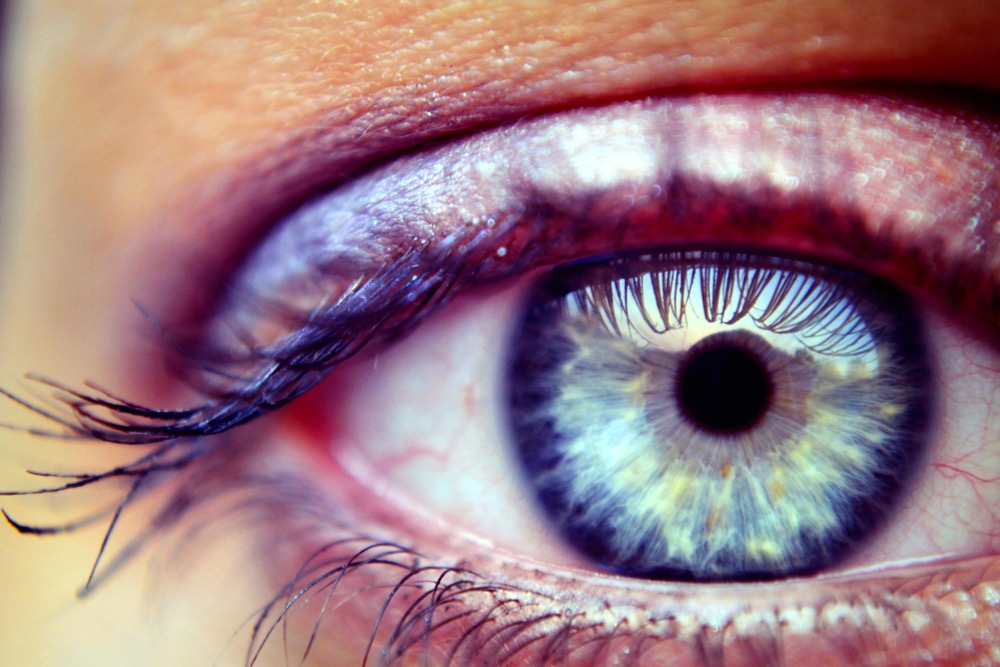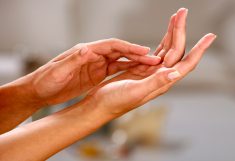If you’ve ever had to use an eye drop, or if you do use eye drops regularly, it is important to use them properly to get the most benefit. Keeping your eyes healthy is a lifelong activity, and using eye drops correctly is a key component.
Eyesight is a valuable, irreplaceable sense. Even so, however, the rate of vision loss is on the increase. In Canada, one in nine people over 65 are affected, and one in four over 80.
Some eye diseases are not reversible, such as macular degeneration, where the light-sensitive nerve cells at the centre of the retina (i.e. the macula) lose their ability to function. Others, however, can be treated. And often, this treatment includes the use of eye drops.
Read Also

Rural health co-ops give a boost to Quebec’s struggling health care system
Health care co-ops offer services to Quebec’s rural residents. Photo credit: Co-op Ici Santé
Cataracts form when proteins in the eye’s lens change, making the lens opaque or cloudy. The majority of cataracts are related to old age and there is a family tendency. Trauma like a hard blow or intense heat can increase your risk, as can smoking. Surgery can successfully remove the cloudy lens replacing it with an implanted artificial one, and most people regain most or all of their vision. Eye drops are an important part of the surgery regime.
Glaucoma occurs when the pressure inside your eyeball (that is, the “intraocular pressure”) is too high. The high pressure presses against the optic nerve causing damage and progressive loss of vision. It occurs in one to two per cent of people over 65, and it is a leading worldwide cause of blindness. The aim of glaucoma treatment is to reduce eye pressure by increasing drainage from the eyeball. Regular use of eye drops will keep pressure low and maintain eyesight.
Conjunctivitis or inflammation of the eye is often caused by infections, foreign objects like contact lenses, lack of sleep, airborne irritants such as smoke, and allergies such as hay fever. Antibiotic eye drops are ideal if an infection is involved, and saline eye drops can moisturize irritated eyes. Artificial tears are ideal for relieving dry eyes caused by a lack of natural lubricating tears.
Regardless of what type of eye drop you are using, correct instillation is key to obtaining the most benefit. You don’t want to introduce any foreign material into your eyes, so be sure to wash your hands before using eye drops, and do not touch the dropper tip to anything (including your eye). Create a pocket with your lower lid by placing your finger gently below your lower lashes and pull down slightly. Tilting your head back slightly will mean a straighter path for the drop into your eye, and looking up will reduce your chances of blinking. You can practice this setup several times prior to actually using your eye drops.
If you start with the eye drop bottle at the side of your head, then move it into position above the pocket, you will be sure to “hit” your eye and not another part of your face. Keep the eye drop bottle about an inch away from your eye and gently squeeze one drop into the pocket. Slowly close your eyelid and wait for about two minutes for the eye drop to be absorbed by your eye.
Holding your finger over your tear duct on the inside edge of your eye will also help prevent the eye drop from draining from your eye. If you need more than one drop, wait for about 20 to 30 seconds for the first one to be absorbed, and if you need eye drops in both your eyes repeat the same procedure in your other eye.
Expired eye drops should never be used and, once opened, an eye drop bottle can easily become contaminated regardless of the expiry date, with the most common contamination occurring by touching or even wiping the dropper tip. Some clinicians recommend disposing of eye drops a month after opening, even if you don’t think the drops are contaminated. Unused eye drops should never be saved for the next time and you should not use anyone else’s eye drops.
If you use eye drops on a regular basis, check your technique in a mirror from time to time. And remember, practice does make perfect. If you have difficulty sensing whether your eye drop has “hit” your eye, keep your drops in the fridge. You will sense the coolness of the drop and know that you were successful, but do check with your pharmacist just to make sure your drops will be OK in the fridge.
After all, an eye drop may be essential to maintaining good vision.















